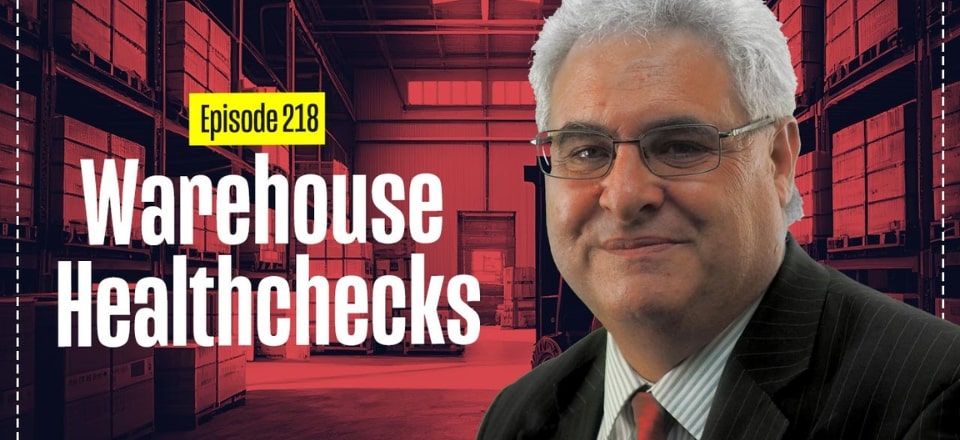Could your warehouse be falling short of its potential, with critical issues going undetected?
A thorough assessment can refine capacity and processes. Hidden challenges might be affecting your efficiency.
Watch the video below to spot these issues and enhance your warehouse’s performance.
Rob: This week’s topic is warehousing health checks, and we have John Monk from Logistics Bureau with us. John, welcome back!
John: Thanks, Rob!
Common Issues in Warehousing
Rob: Let’s dive into warehousing health checks. What are some common findings when you evaluate a warehouse?
John: Often, warehouses seem full, but we can usually find more space through better organization. Clients might think their warehouse layout is efficient, but they could be wasting time due to poor design. For instance, while a warehouse may appear congested, it’s often the case that the space isn’t being utilized optimally. By changing the layout, such as switching to an arrow aisle design, we can sometimes increase capacity by 20-30%. This redesign helps make better use of the existing space.
Rob: I recently reviewed a warehouse in Perth that was full. Why do people often think their warehouse is at capacity, and what might they be overlooking?
John: People often consider their warehouse full when storage locations are occupied or congested. However, they might not be using available space efficiently. By adjusting the layout, such as resizing storage locations, we can often uncover additional capacity without needing a larger facility.
Strategies for Increasing Capacity
Rob: What about adding mezzanine floors to increase capacity? Are there any pros and cons to this approach?
John: Mezzanine floors can indeed add capacity but come with downsides. They can be expensive and may slow down operations due to the need for extra equipment like elevators. In many cases, using high-density shelving or mobile equipment can be more effective. For example, articulated forklifts are ideal for narrow aisles, allowing for tighter storage configurations and better space utilization.
Rob: That’s interesting. I recall you mentioned articulated forklifts earlier. Can you explain how they help?
John: Certainly. Articulated forklifts are designed for narrow aisles, allowing for improved maneuverability. They are particularly useful in very tight spaces, making it possible to create narrower aisles while still maintaining accessibility.
Assessing Warehouse Efficiency
Rob: If someone is inspecting their warehouse, what should they look for to identify inefficiencies?
John: A quick way to check is the “dust test.” If products near the dispatch area have dust on them, it’s a sign they’re slow-moving and not optimally placed. Ideally, high-turnover items should be closer to packing and dispatch areas. Additionally, observing congestion in areas like receiving docks can reveal workflow issues that need addressing.
Rob: Great tips, John. Thanks for sharing your insights on warehouse efficiency!
John: My pleasure, Rob!
Related articles on this topic have appeared throughout our website, check them out:
- Warehouse Product Slotting: The Ultimate Guide
- The 7 Principles of Warehouse and Distribution Centre Design
- Planning a Warehouse Network and Design: Key Factors to Consider
- Spotlight on: 7 Key Warehouse Processes
- 10 Proven Principles for Best Warehouse Design and Operation
Editor’s Note: The content of this post was originally published on Logistics Bureau’s website dated December 27, 2023, under the title “Warehouse Health Checks with John Monck“.

